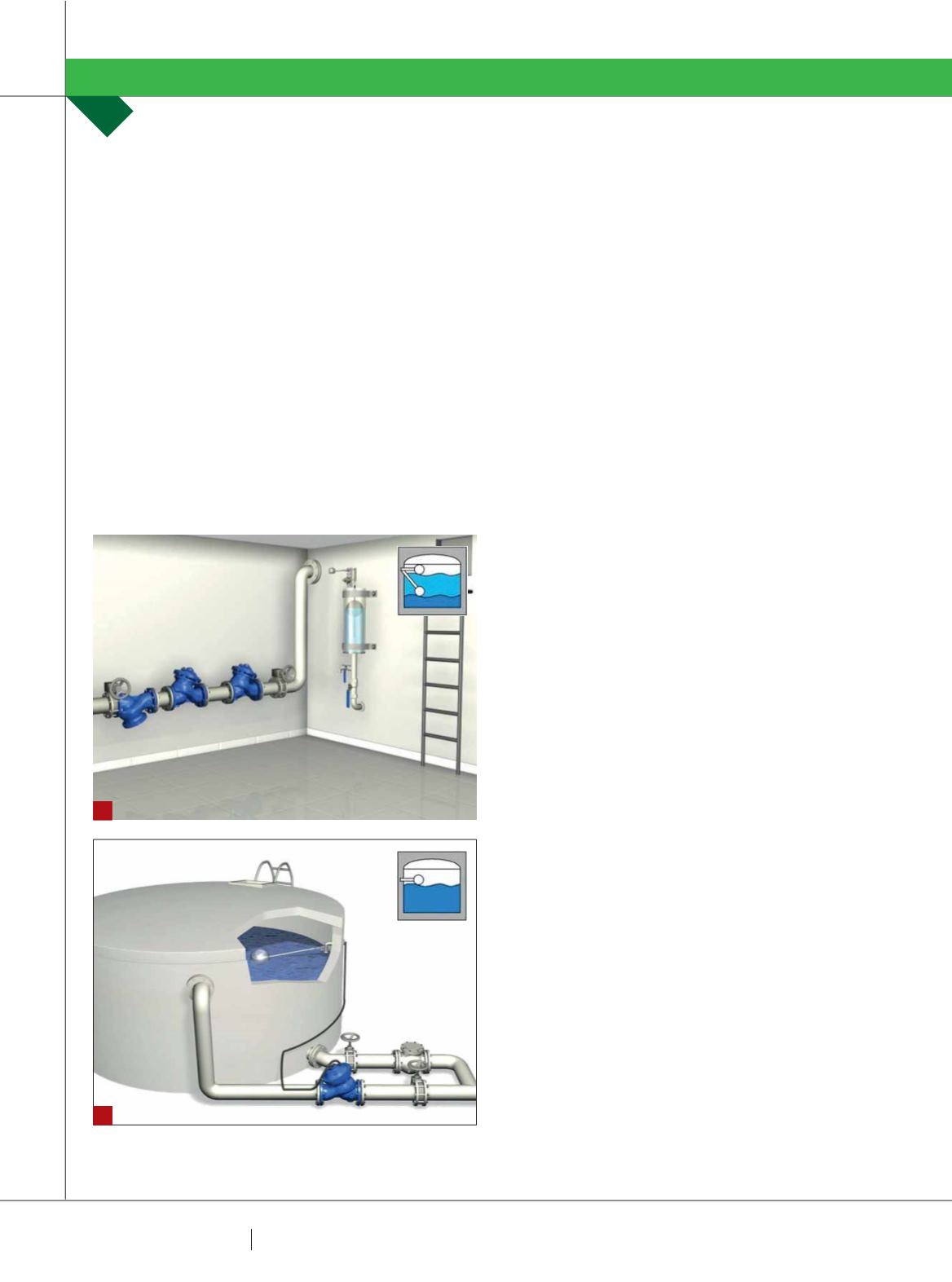

5 4
PLUMBING CONNECTION
WINTER 2016
pilot configurations. Bi level control valves offer more
reliability in this application due to the fact they are only
either in the open or closed position and aren’t continuously
working when low flow demand times are experienced. The
valves close at pre-set high level position and open once
the low position is reached. The altitude pilot or bi level
float pilot can be installed external to the tank which would
negate the need to enter the tank. They guarantee a high
turnover of water in the tank thus keeping water supply
refreshed.
Where always-full type reservoirs are required to keep
pressures to maximum, modulating altitude or horizontal
pilot controls are the best options. This type of valve and
pilot combination are more commonly used on fire tank
applications. Using a TFV with altitude pilot control will
negate the use of the pilot and make for easier installation
and future maintenance.
VALVE CONTROL
RUSS DUNNE
IMAGE 1:
Typical bi level install with external float pilot.
IMAGE 2:
Typical modulating level control valve with internal
mounted float pilot.
FIRE WATER TANKS
Generally fire tanks will always remain in a full capacity
state so as to provide water in the event of a fire. Modulating
pilot or altitude control valves are used in these instances as
any reduction in the water level will almost immediately be
refilled. The issue for some states of Australia is evaporation
of the water level which may cause the valves to modulate
open for very small flows and long term this is not healthy
for the valve. Again, cavitations may occur at low flows,
reducing the life span of the valve.
The common thread in overcoming the evaporation issue
is to use a small 20/25mm modulating servo type float
valve to maintain a full tank. The theory is that the small
float valves will allow the evaporation capacity to be met
without the larger needing to be open. The trouble with this
option is that the larger control valve pilot is permanently
drowned and a small failure of this modulating pilot can
result in the loss of water to the overflow. Without close
monitoring of the tank it may go unnoticed and result in
excess water usage or failure of the larger valve due to low
flow cavitations.
Consideration should be given to using bi level type
valves as used on domestic feed tanks due to the fact
that minimum top water levels can have a minimum level
differential of 150mm. Altitude valves have a minimum level
differential of 300mm-1m with the latter being too much of
a gap between top water when the valve opens.
COMBINED FIRE/DOMESTIC WATER TANKS
Combined tanks have a maximum water level
within the tank that needs to be retained in case of fire
and volume of water above this for domestic feed water.
Using bi level control in this application is ideal as it allows
control of the domestic feed water to be turned regularly
while maintaining a maximum fire level water capacity.
Again, installing the float assembly external to the tank
prevents future maintenance issues and allows easy
access to both pilot and valve during install commissioning.
OH&S issues are averted as no one is required to enter
the tank.
To correctly select the type of level control valve required
there are a few simple questions that should be answered
to allow correct selection of valves. Getting this right at the
start will overcome the many issues and extra associated
cost with rectifying to the correct valve.
∫ Flow required or expected flows
∫ Incoming pressure from either town’s main or pumped
pressure (pressure to the incoming side of the valve)
∫ Valve location
∫ Type of valves V application i.e.
– Domestic feed tank
– Fire water reservoir
– Combined fire/domestic water tanks
1
2
















